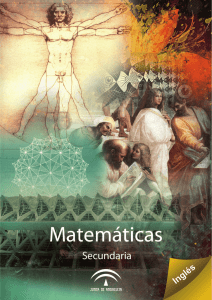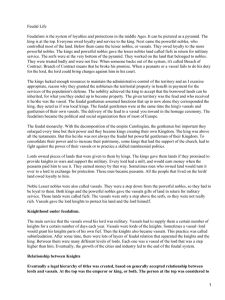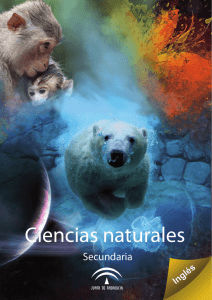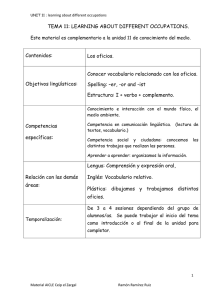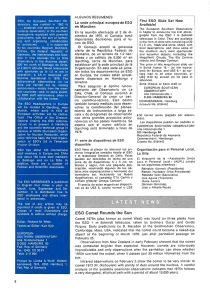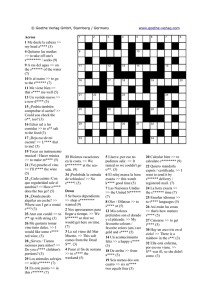Feudal society: Life in the Middle Ages
Anuncio
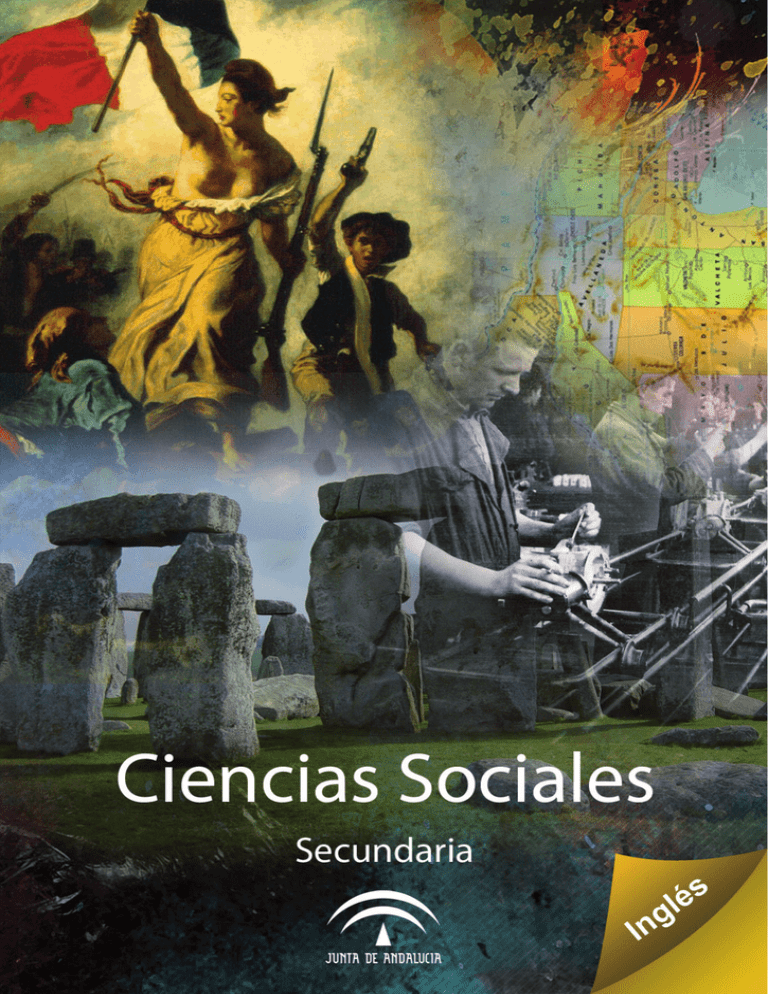
CONSEJERÍA DE EDUCACIÓN Dirección General de Participación e Innovación Educativa Identificación del material AICLE TÍTULO Feudal Society: Life in the Middle Ages NIVEL LINGÜÍSTICO SEGÚN MCER A2.1 IDIOMA Inglés ÁREA / MATERIA Historia NÚCLEO TEMÁTICO La sociedad feudal GUIÓN TEMÁTICO La unidad hace un recorrido por el funcionamiento del feudalismo como estructura social y económica partiendo de la ausencia de poderes fuertes frente a las segundas invasiones. Se analizan los tres estamentos clásicos (nobleza, clero y campesinado). Se incluye una actividad de síntesis final y una autoevaluación. FORMATO PDF CORRESPONDENCIA CURRICULAR 2º de Educación Secundaria AUTORÍA Alberto de los Ríos Sánchez TEMPORALIZACIÓN APROXIMADA 5 sesiones. Más una actividad inicial, una actividad de síntesis final y una ficha de autoevaluación de contenidos y destrezas. COMPETENCIAS BÁSICAS Lingüística: mediante la lectura comprensiva de textos sobre el feudalismo y los órdenes medievales. Social y ciudadana: la simulación de situaciones de la vida medieval. Tratamiento de la información: apreciación de diversas fuentes (escritas, gráficas...) para comprender los conceptos básicos. Aprender a aprender: interpretando las diversas fuentes de información sobre el feudalismo para reconstruir el funcionamiento de la sociedad feudal. OBSERVACIONES Los contenidos de las sesiones pueden exceder de una hora de clase real, especialmente cuando se llevan a cabo algún ‘role play’ o trabajo grupal. Las actividades de postarea, al final de cada sesión podían utilizarse todas como actividades finales, junto a la ficha de autoevaluación. Además, cada sesión puede utilizarse de forma independiente. Material AICLE. 2º de ESO: Feudal Society: Life in the Middle Ages 3 Tabla de programación AICLE OBJETIVOS - Reconocer los rasgos básicos sociales, económicos, políticos, religiosos, culturales y artísticos que caracterizan la Europa feudal. - Reconocer los diferentes estamentos sociales de la Europa feudal y su evolución CONTENIDOS DE CURSO / CICLO - La sociedad medieval - La sociedad, la economía y el poder en la Europa feudal - El papel de la Iglesia - Búsqueda, obtención y selección de información de fuentes escritas, iconográficas, gráficas, audiovisuales - Elaboración escrita de la información obtenida TEMA - El origen de la sociedad feudal. Las invasiones - El feudalismo, concepto y estructura - El poder de la nobleza. La vida caballeresca - El poder de la iglesia. La vida monacal - La vida de campesinos, siervos y libres MODELOS DISCURSIVOS - Explicar hechos históricos - Comparar civilizaciones pasadas y presentes - Comparar versiones de hechos históricos - Analizar consecuencias - Analizar la composición política de Europa TAREAS - Simulación de una situación de crisis ante una invasión vikinga - Análisis de imágenes - Composición de un texto en grupo (roundtable) - Diseño de un póster sobre la sociedad feudal - Reconstrucción grupal de la vida monacal - Diseño de un cómic sobre la vida campesina CONTENIDOS LINGÜÍSTICOS CRITERIOS DE EVALUACIÓN 4 FUNCIONES: - Predecir y tomar decisiones - Hacer descripciones - Expresar acuerdo - Preguntar sobre datos históricos ESTRUCTURAS: there is, there are, I can see… Peasants lived, worked… but, however I will What did Vikings…? What did they…? Where did they …? LÉXICO: nobles, knight, lord, Pope, bishop, archbishop, peasant, serf, freemen, fief, manor, homage, tournament, abbey, manor, vassal, page, armour, helmet, lance, pilgrimage, indulgence, harvest, crop, fallow, … - Describir los rasgos sociales, económicos, políticos, religiosos, culturales y artísticos que caracterizan la Europa feudal - Identificar las funciones desempeñadas por los diferentes estamentos sociales Material AICLE. 2º de ESO: Feudal Society: Life in the Middle Ages FEUDAL SOCIETY. LIFE IN THE MIDDLE AGES. QUESTIONS TO START. WHAT THREE GROUPS OF PEOPLE CAN YOU SEE IN THE PICTURES? CAN YOU GUESS WHAT THEY WERE CALLED? Material AICLE. 2º de ESO: Feudal Society: Life in the Middle Ages 5 DID YOU KNOW? Darth Vader, the Star Wars character, was inspired by different medieval knights. In the movie he belonged to the Sith knights, but was a Jedi knight before. Actually, he wore armour and a helmet similar to those of medieval samurais in Japan. He also wore a monk’s cloak, similar to those of medieval European monks. 6 Material AICLE. 2º de ESO: Feudal Society: Life in the Middle Ages SESSION 1. 1000 A.D. APOCALYPSE, NOW? PRETASK 1. Word cloud. Look at the words below. First, listen and repeat. Then, organize them into the categories in the table below. 2. Your teacher is going to read two texts. Listen and underline the words that you hear. Kingdom fear Slavs homage fief floods settle manor church abbey Saracens mortality famine drought religion superstition year 1000 feudal knights servants Vikings Huns Listen again and try to guess what the texts are about. What is text 1 about?____________________________________________________ ____________________________________________________________________ ____________________________________________________________________ What is text 2 about?____________________________________________________ ____________________________________________________________________ ____________________________________________________________________ Material AICLE. 2º de ESO: Feudal Society: Life in the Middle Ages 7 TASK. HOW TO SURVIVE IN THE YEAR 1000 AD? READING. Text 1. Europe around the year 1000. Around the year 1000AD Europe was a mosaic of small kingdoms and states. Life was hard. Life expectancy was around 40; wars and diseases made the mortality rate rise and droughts and floods often caused terrible famines. Lords were the landowners and peasants worked for them. Christianity was practiced throughout the continent and Latin was the common written language, but most people did not read or write. People strongly believed in superstitions and God’s punishment of their sins. All tragedies had a simple explanation for them: the end of the world was coming, and it was going to take place in the year 1000AD. Text 2. Invaders¡ During the 9th and 10th centuries a new population came to Europe to settle down. It was the second wave of invasions, after the Germanic invasions in the 5th century which ruined the Roman Empire. Vikings, Magyars, Saracens and Slavs terrified the people of Europe. Vikings were excellent travellers and traders, but also fierce pirate raiders. They came from Scandinavia (nowadays Denmark, Norway and Sweden). They travelled as far as Terranova, in Canada, although they did not remain there. They conquered the British Isles, Northern France (Normandy) and Southern of Italy. English words such as ‘bread’ or ‘window’ come from the Viking language. They also attacked many places in Europe, stealing treasures and attacking local people, thanks to their fast and small ships that could sail through seas and rivers. They even arrived at the Guadalquivir in 844AD. Saracens were Muslim pirates who attacked the Mediterranean areas and frightened coastal populations. Magyars (Hungarians) came from Central Asia, just as Attila and the Huns did, and they settled in Eastern Europe, founding the kingdom of Hungary. Slavs, from the plain heart of Russia, invaded and occupied the Balkans. Fear and terror dominated Europe before the arrival of year 1000AD. ‘The wrath of the Lord was falling upon the world’. The end of the world was coming… or not. TEXT ATTACK! 1.Fill in the table: 8 Material AICLE. 2º de ESO: Feudal Society: Life in the Middle Ages 2. Make questions using the following information from the text. Statements In 1000 A.D. lords were the landowners and peasants worked for them. All the tragedies had a simple explanation for them: the end of the world was coming. Vikings, Magyars, Saracens or Slavs terrified the people of Europe. Vikings conquered the British Isles, northern France (Normandy) and the south of Italy. Christianity was practiced throughout the continent. Latin was the written common language. Questions Who were the landowners around year 1000? Who worked for them? ANALYZING IMAGES. Viking explorations and territories Viking sailing Material AICLE. 2º de ESO: Feudal Danish Viking approaching Winchester (England). Book from 1900. Society: Life in the Middle Ages 9 1.Where did Vikings settle down before 1000AD? Where is Vinland? 2. Look at the two pictures of Vikings. One is a contemporary drawing. The other is a picture from 1900. What do they have in common? What is the image of Vikings shown in by both pictures? Write your answers in the box. Both pictures show... The Vikings look/seem to be/ are/… ROLE PLAY. INVASION!!! GROUP ACTIVITY. In groups of five you choose one of the options below. One of you will take notes, another will be the spokesperson, and the rest of the group will advise the spokesperson on what decisions to make. Setting. 1000AD. Vikings ships are coming through the river. Your group lives in a small village along the riverside. You and your family are in danger. What should you do?! Options. Advantages 1.Get away. Escaping is the only way to survive a Viking Disadvantages invasion. Consequences 2.Defending our village. Our Advantages belongings will be destroyed if we leave them. Disadvantages Consequences 3.Send a message to our Lord who lives in a castle near the village. Advantages Disadvantages Consequences 4.Go to the church to pray. A church is a sacred place which they will not attack. God will listen to our prayers. 10 Advantages Disadvantages Consequences Material AICLE. 2º de ESO: Feudal Society: Life in the Middle Ages 5. Join the invaders. We must give them information about how to conquer our lord’s castle. Advantages Disadvantages Consequences Speaking. What did you choose? Explain your choice to the other groups. The spokesperson, helped by the scribe, must justify your reasons for that choice. WHAT I LEARNED. True or false. 1.Europe around the 1000AD was a mosaic of small kingdoms and states. 2.Life was hard, but life expectancy was around 65. 3.Latin was the common written language, and most people read and wrote it. 4.During the 9th and 10th centuries new populations came to Europe to settle down. It was the first wave of invasions. 5.Vikings were excellent travellers and traders, but also fierce pirate raiders. 6.Fear and terror dominated Europe after the arrival of 1000AD. Write the correct sentences in the box 2.Circle the odd word out Viking Slav Latin Saracen Drought Flood Famine Invasion Fear Terror End of the world Mortality Material AICLE. 2º de ESO: Feudal Society: Life in the Middle Ages 11 SESSION 2.THE FEUDAL SYSTEM. PRETASK. 1. Word cloud. Listen to your teacher and repeat the words below. 2. Look at the pictures and label them using as many words you can from the word cloud above. 3. Listen to your teacher reading a text 2. Underline the words that you hear. homage fief servant Vikings noble lord fief vassal peasant baron knight swear ceremony Christianity flooding protection serf feudalism drought protection king castle land service support manor manor loyalty lord reward TASK. UNDERSTANDING FEUDALISM. READING. Text 1. The Feudal System was introduced to England following the invasion and conquest of the country by William I (The Conqueror). The system had been used in France by the Normans (Vikings) from the time they first settled there in about 900AD. It was a simple, but effective system, where all land was owned by the King. One quarter was kept by the King as his personal property, some was given to the church and the rest was given to others. 12 Material AICLE. 2º de ESO: Feudal Society: Life in the Middle Ages Text 2. During the 8th and 9th centuries European kingdoms were small and weak. Invaders conquered their cities and took their treasures. Kings had no armies to protect their countries. However, there were many nobles living in strong castles with their own soldiers to protect themselves. Kings asked nobles for help and granted them land in exchange. This was the origin of the feudal system. Thus, nobles became more powerful and wealthy. They protected the peasants who started to work for them. They also had to obey them as their lords. They became serfs. The granted land was called the fief or manor. Great nobles (barons) accepted the king’s power but the king was usually very far from them. They paid homage in a ceremony where they swore loyalty to the king. Lords could also have other vassals (nobles or knights) who received a small fief or manor. And, finally every lord, baron, noble or knight could have serfs. These were peasants who were obliged to work, to pay taxes or even to fight for the Lord. Moreover, the lord became the judge of his land. Peasants were part of their fief. They were servants. Feudalism is the age of the power of lords. They had real power for several centuries. Text 3 Characteristics of Feudalism: •Each person in the system received land •Each person in the feudal system had to pay a price •Payment was in either men or services •Land was passed down through the system •Service and support was passed up through the system •Homage: if someone gave you land you had to swear an oath or loyalty to him •Supporters of the King were rewarded •Loyalty was given to the king TEXT ATTACK! 1. Carefully read text 2 and try to find a word to finish the following sentences: • A person who received a small fief or land was a ____________ • The ceremony where they swore loyalty to the king was called___________ • Someone who obeyed his lord was a ____________ • The granted land was called a ______ or a ____________ • Those obliged to work, pay taxes or to fight for the lord were __________ Material AICLE. 2º de ESO: Feudal Society: Life in the Middle Ages 13 2. Try to fill in the boxes in the following diagram. 3. Look at the following picture. Who do you see? What are they doing? Can you describe the picture? Write your answers in the box MAKING A POSTER. THE FEUDAL SYSTEM. 1.In groups of four make a poster about the feudal system. One of you is the artist, one of you must be the writer, and the other two are the speakers. 2.You can use this diagram or design another one to show the people involved in the feudal system, what they give and what they received. Draw the characters or to represent them, e.g. a crown for the king. 14 Material AICLE. 2º de ESO: Feudal Society: Life in the Middle Ages 3.Later, you will have to show the diagram to your classmates. WHAT I LEARNED. 1.Write a short definition for the following terms. Review the texts if necessary. A serf is someone who A fief is land that A vassal is someone who A homage is a ceremony where Material AICLE. 2º de ESO: Feudal Society: Life in the Middle Ages 15 2. Look at these sentences. They are an ‘oath’, words that a vassal swore to a lord. In the box, write down the characteristics of feudalism that you recognize from these sentences. I become your man From this day forth I shall be true and Faithful to you for The lands I hold from you Loyalty • • SESSION 3. NOBLES AND KNIGHTS. FIGHTING IN THE NAME OF GOD. PRETASK. 1. Match the following words with the pictures below. castle horses Chivalry tournaments pages 16 weapons ladies lances shield armour fighter squire Material AICLE. 2º de ESO: Feudal Society: Life in the Middle Ages 2. Classify the vocabulary into the following categories: People Weapons and WarActivities TASK. DEPICTING A NOBLES’LIFE. JIGSAW READING. The class will divide into groups of four. Students 1, 2 and 3 will each have a few paragraphs to read. Student 4 will be the group’s spokesperson. Students 1, 2 and 3 must read their paragraphs and then share the information with the rest of the group. Together, the groups will have to fill in the following chart. When your group finishes, the spokesperson will present your answers to the rest of the class. Text 1. Nobles and Knights Student 1 Some nobles were very wealthy and owned large amounts of land, fiefs or manors. Others just owned their horses and weapons. We know them as knights. Both, nobles and knights fought in wars. War was their job. Some writers called them ‘bellatores’, a Latin word that means ‘fighters’. We recognize them in books thanks to their lances, shields, armour, and maces. They fought on horseback. They started serving as pages and learning to fight from important nobles. When they were teenagers they became squires serving knights. If they were able to show mastery in fighting, they finally became knights. Nobles and knights trained in tournaments in periods of peace. They went to war when the king asked them to. Text 2. Living in a Castle Student 2 During the Middle Ages, nobles and knights lived in castles. They were built by wealthy nobles. A castle was a safe place where they could be protected against invasions and wars. Many different people lived within its walls, not just the nobles and their families. There were probably more than a hundred people living inside its walls. Most of them were servants and soldiers. Soldiers protected the castle from enemy attacks using bows and arrows. They also used boiling liquids or huge stones to crush their enemies from above. A noble’s life in a castle was pleasant. They were protected from invasions and had time to enjoy pleasures such as games, big feasts, and plays. The wives of nobles wore luxurious clothes. Material AICLE. 2º de ESO: Feudal Society: Life in the Middle Ages 17 Text 3. The Tournament Student 3 In medieval times, war was the nobles’ main business. But during periods of peace, they liked to practice their fighting and war techniques. Tournaments were a sort of sport. It was an opportunity to show off their abilities in front of the ladies of court, who watched the tournaments dressed in their finest clothes. A knight could fight as a lady’s favourite, wearing a piece of her clothing, e.g. a scarf. The age of chivalry was at its peak and spreading all over Europe. Tournaments became socials events. They offered a chance to become well known and famous and were a place for knights to find a bride. Knights travelled around Europe in the search of glory, as sportsmen do nowadays. The most famous type of tournament was the one-to-one fight, where each knight tried to knock the other to the ground. ANSWER WORKSHEET NOBLE’S LIFE ACTIVITIES PEOPLE INVOLVED Nobles and Knights Living in a castle Tournament 18 Material AICLE. 2º de ESO: Feudal Society: Life in the Middle Ages Roundtable. Work in groups of four. Look at the picture. The teacher will dictate the beginning of a text. Then, when the teacher claps one member of the group will continue the text by writing another short paragraph about the picture. Each time the teacher claps, you will pass the paper to a new group member who will write the next section of text. Continue like this until the circle is complete. The member of the group who wrote the first paragraph will also write the last one. When you finish, choose a spokesperson to read your text out loud to the rest of the class. Teacher’s dictation My name is William of Beaumont, duke or Cornwall… Material AICLE. 2º de ESO: Feudal Society: Life in the Middle Ages 19 WHAT I LEARNED 1. Read the following text about the life of a knight and underline the sentences you think are wrong or improbable. My name is Joan of Arc. I am a peasant girl who was born in Eastern France. I led the French army against the English. We won important battles during the Hundred Years’ War. I was called by God to lead the French army. I hear God’s voice telling me what to do in battles. King Charles sent me as French leader. Now I am a prisoner of the English, and I am going to be burnt at the stake, as a witch. 2. Reflect. Read the text again and talk to your partner. Discuss these questions. •Do you think a woman could live like a knight did? •What do you think about messages form God? Were people very religious at that time? SESSION 4. THE POWER OF THE CHURCH. LIFE IN A MONASTERY. PRETASK. 1. Listen and repeat the words below. 20 Material AICLE. 2º de ESO: Feudal Society: Life in the Middle Ages 2. Organize the words into these catagories Church characters. Religious places Religious moment in life Pope Monastery jobs Beyond life Ways to go to heaven or hell TASK. THE CHURCH IN THE MIDDLE AGES. LIFE IN A MONASTARY. Text 1. The Church in Middle Ages. In the Middle Ages everyone was religious. Religion and the Church were the centre of life in those times. The main building in a village was the church, as the Cathedral was in a town. Heaven and hell were the final destinations after a hard life. Wealthy people could give all their money and lands to the Church to reach salvation and access to heaven. All the Christian countries were regarded as Christendom, the kingdom of the True Religion. The Church taught their beliefs to everyone. In Western Europe, there was just one Church, the Roman Catholic Church. The head of church was the Pope. Under him were bishops and archbishops. Under them, priests lived in parishes. People belonged to a local parish. Latin was the common language of Christendom. Bishops and archbishops were as important as nobles in medieval society. Parish priests were also very important in local life. Weddings, baptisms, confessions and burials were some of the duties that they carried out. They also gave mass. Material AICLE. 2º de ESO: Feudal Society: Life in the Middle Ages 21 Text 2. The Power of the Church. The Church was a very powerful institution. It owned large farming lands. Farmers had to give one tenth of their crops to the Church. This tax was called a Tithe. The Church controlled people’s beliefs. Heaven or hell were the final place for believers. People were very frightened by the images of hell, images of pain and suffering. There was another place to go called purgatory, where you could pay for your sins. A person could reduce their stay in the purgatory as a result of other people’s prayers. The Church said that you could make your stay in Purgatory shorter if you bought an indulgence (a special pardon) or by going on a pilgrimage. The Church made a lot of money selling shortcuts to heaven. Finally, the Church was not controlled by kings or nobles. The Pope was the only leader. They had their own courts, and their own judges. TEXT ATTACK! 1.Find a word that goes with the following definitions: 2. Put the following religious moments in a person’s life in chronological order: • A place where you must stay until you pay for all of your sins: • A tenth of the crops: • The Church leader: • They lived in local parishes: • The common language of the Church: • A special pardon for sins that you could buy: • All the Christian countries together are: weddingbaptism burial confession 3. Look at the picture. Which place is painted, heaven, hell or purgatory? Describe what is going on in the picture: the characters, places, etc. I think the painting shows... You can see… 22 Material AICLE. 2º de ESO: Feudal Society: Life in the Middle Ages Text 3. Life in a Monastery. Friars. Monasteries were important places in medieval life. Monks or nuns lived, prayed and worked (‘ora et labora’ in Latin) there. They were in isolated places where monks could live quietly, and devote themselves to contemplation. They lived together in communities where they carried out different types of jobs such as farmers, teachers, almoners etc. Physical work, reading and praying were what monks did. A monk or nun’s day was regulated by prayer in the abbey. These prayers took place every three hours, even at night. But they often lived a much more ordinary life, and they were criticized because of it. During centuries monasteries were the only places to study and learn. Monasteries were a sort of library for manuscripts. Many monks copied ancient books in the ‘scriptorium’. They created beautiful ‘illuminated’ books, full of fantastic images. Friars appeared later. They were similar to monks but they rejected monastic life. They wanted to live among the people in the towns. They became very popular, because they were not rich like the monks from the monasteries. I think a monk would read books... I also think he would… In addition,… Life in a Monastery. (See Worksheet) You will divide into eight groups. Each group member will have a different piece of information. Work together to fill in the table. Material AICLE. 2º de ESO: Feudal Society: Life in the Middle Ages 23 WHAT I LEARNED. 1. Check and see if this simple diagram is right or not. If not, do it again below. POPE 24 PARISH PRIEST BISHOP ARCHBISHOP 2. Circle the odd word out. cathedral parish abbey castle bishop priest lord archbishop Material AICLE. 2º de ESO: Feudal hell heaven manor purgatory wedding baptism burial mass Society: Life in the Middle Ages LIFE IN A MONASTERY. WORKSHEET. INDIVIDUAL PIECES OF INFORMATION (to cut them for each student) 1. I am an illuminator. I copy down books in the ‘scriptorium’. I decorate the first letter of each page and I draw beautiful pictures to describe the ideas from the book 2. I am the almoner. I give alms (money, food, clothes) to the poor of our community, especially to the beggars 3. I am a farmer. I work the land to grow crops to provide food for my community. I work very hard everyday. 4. I am the Abbot. I am the leader of the monastery. I take care of all the monks. I make them obey the rules. I also receive a tithe from the peasants. 5. I am a craftsman. I repair everything. Sometimes I make furniture. 6. I am the novice master. I teach the new monks who want to live in the monastery. I teach them Latin and Theology. 7. I am a friar. I do not live in the monastery. I live in a town. I preach and talk about salvation and faith. I also beg. I travel a lot. GROUP TABLE 8. I am a hospitaller. I take care of people who come to the monastery. I provide them with food and a place to stay. Material AICLE. 2º de ESO: Feudal Society: Life in the Middle Ages 25 SESSION 5. VASSALS, SERVANTS AND PEASANTS. WORKING FOR THE LORD. PRETASK 1.Word cloud. Listen to the words below. 2. Classify these words into the following categories: People 26 Places Disasters Time Farming 3. Listen to your teacher reading a text. Underline the words that you hear. Peasant serf Pope fief manor Bishop village mill knight bridge disease plague drought flood kingdom sunrise sunset tax duke page tithe monastery freemen abbot peasant hen cathedral Latin sheep harvest crop fallow 4. Come up with a title for the text and write in the box below. . Material AICLE. 2º de ESO: Feudal Society: Life in the Middle Ages TASK. UNDERSTANDING A PEASANT’S LIFE. LIFE IN A MEDIEVAL VILLAGE. 1.During the Middle Ages, most of the people were peasants. Most of them lived near a castle or manor house, working for the lord. 2.Some of them were serfs. Serfs were under the lord’s rule. 3.They had to stay on the lord’s lands forever. In some places, they had to ask for permission to get married. 4.They did not earn any money for their work. They were part of the fief, part of the manor (land owned by the lord). Serfs’ children became serfs too. 5.Some of the peasants were freemen. But they used to be poor. 6.Their lives were hard and they had to pay rent and a lot of taxes to the lord, and some of the harvest. 7.They also paid a tithe, a tenth of their crops that they gave to the Church. 8.A serf’s life was hard. He had to obey his lord and work for him. He spent most of his life working in the fields. 9. He needed his lord’s permission to travel outside the fief. He had to take his grain to the lord’s mill to make flour. 10.But he paid a tax for it too and the lord kept some for himself. He paid for crossing the bridge over the river too. 11. He had to produce enough to survive and to pay the lord and the tithe to the Church. He had to make his own clothes and furniture and build his own house. Sometimes he gave presents to his lord to gain his favour. 12. In addition, a serf’s life could get worse. Diseases, floods, droughts or plagues could kill them and their families. 13. Serfs rarely lived longer than forty. A short and hard life. 14. Peasants lived in small villages in small mud and wood houses, sharing the house with their chickens, pigs, cows or sheep. They ate bread, vegetables, fruit and cereals. 15. Sometimes they ate fish or meat (salted or smoked to keep it for long time). 16.As the farming techniques were not very developed, the harvests were small. Every year they left half of their land to fallow. 17.They worked from sunrise to sunset but they had hardly anything to eat. Many families often went hungry. TEXT ATTACK! 1.Write a title for the text. Compare it with the title that you wrote in the pre-task section. Material AICLE. 2º de ESO: Feudal Society: Life in the Middle Ages 27 2. Read the text again. Each of the numbered sections refers to a different sub-topic. Use the following chart to organize each of the sections. 3. Describing pictures from medieval books. 1 2 Les Très Riches Heures du Duc de Berry, 1410s Work with a partner. After reading the text, describe these images; the characters, jobs, buildings, etc. 1. In picture 1 , a peasant is working the land,… 28 2. In picture 2, a farmer is taking care of cattle, … Material AICLE. 2º de ESO: Feudal Society: Life in the Middle Ages CARTOON WORKSHEET In groups of four, draw a cartoon about peasant life. Choose a character, give him/her a name and describe what a typical day for a peasant (serf or freemen) in a medieval village would be like from sunrise to sunset. Introduce ideas about work, diet, money, taxes, places to go, disasters and people related to the peasant’s life. Don’t forget to use speech bubbles. • one of you must be the artist • two of us must write the speech bubbles • one of you will be the spokesperson who will explain the story to the class Material AICLE. 2º de ESO: Feudal Society: Life in the Middle Ages 29 WHAT I LEARNED. 1. The following picture was painted after the end of the Middle Ages. What similarities and differences can you see between life in the picture and life in the Middle Ages? The Peasant Wedding, by Flemish painter Pieter Brueghel the Elder, 1567 or 1568 Similarities Peasants are mixed with the nobles and clergy… Differences It shows a pleasant and happy life… 2. Circle the odd word out. 30 peasant serf freemen fief bridge bishop village mill knight disease plague drought Material AICLE. 2º de ESO: Feudal sheep harvest crop fallow Society: Life in the Middle Ages HOMEWORK. FINAL SUMMARY. Review the previous sessions and fill in this diagram. Material AICLE. 2º de ESO: Feudal Society: Life in the Middle Ages 31 FEUDAL SOCIETY. ASSESSMENT WORKSHEET. Your task is to reflect on what you have learned and receive feedback from you teacher. Read the following statements about skills and knowledge you have learned during the unit. Circle one of these options: YES NO NOT YET. Self-assessment chart I CAN... I KNOW Organize vocabulary into categories YES NO NOT YET Predict the topic of a reading YES NO NOT YET Take notes from a listening YES NO NOT YET Get valuable information from different sources YES NO NOT YET Describe images and pictures YES NO NOT YET Summarize the main ideas of a text YES NO NOT YET Make decisions as a part of a group YES NO NOT YET Write a text after analyzing a picture YES NO NOT YET Participate in a role play YES NO NOT YET How feudalism works YES NO NOT YET The main social and economical concepts of feudalism YES NO NOT YET The role of nobles and knights in the middle ages YES NO NOT YET The role of the church in the middle ages YES NO NOT YET What life in a monastery was like YES NO NOT YET What everyday life for a peasant was like YES NO NOT YET What life in a medieval village was like YES NO NOT YET 2. FEEDBACK. Contents Developed skills Suggestions to improvement 32 Material AICLE. 2º de ESO: Feudal Society: Life in the Middle Ages
